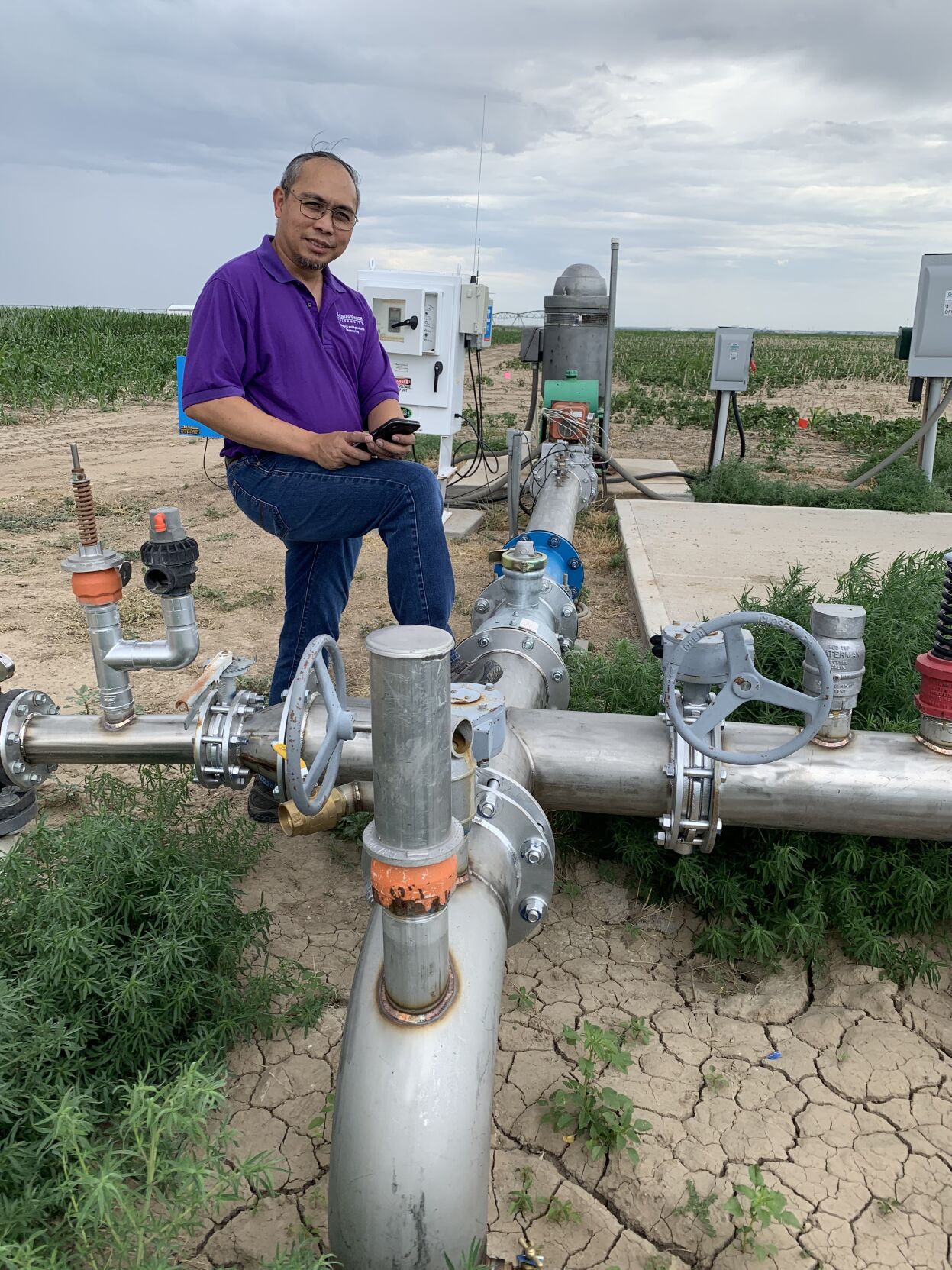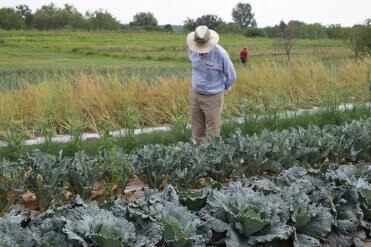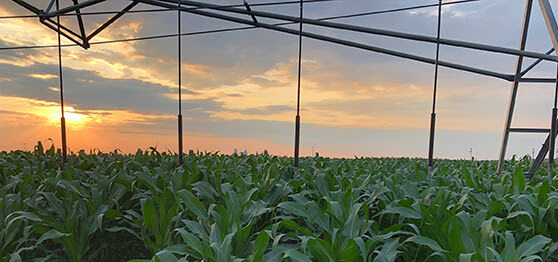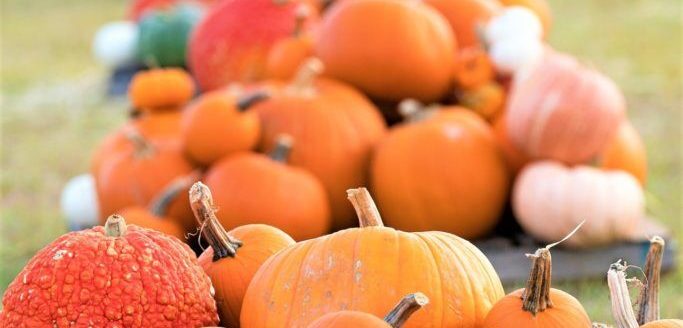It’s a no-brainer to many in middle America that water on or under the prairie is becoming more golden than the food, fuel and fiber it produces, vital to prosperous production and the economies of many regions.
Intense efforts have ensued over the past couple of decades to squeeze as much production out of every drop stored beneath the rich, fertile soil in the semi-arid High Plains, but the problem is far from fixed as more wells go dry.
“Saving more water without harming bottom lines can be done, but adoption of methods and tools to do so has been slow,” said Amy Kremen, associate director of the Irrigation Innovation Consortium, headquartered at Colorado State University, Fort Collins.
Producers, scientists and experts in everything throughout agriculture, from irrigation equipment to seed development and marketing, have had the precious resource in their crosshairs for generations.
Only these days, it seems the effort has risen to another level. Not only are there new mindsets and technologies, interest in performance and cooperation on every level is growing. Goals are to keep communities, counties and states viable as farmers feed the world.
“We’re doing some great things with value chain partners. All partners are in the room discussing how to thread the needle for full integration,” said Dwane Roth, who used to farm with family in Finney County, Kansas, and now works as a strategic sustainability manager for Syngenta, a global crop protection and seed company. He has met with key stakeholders in several agricultural sectors throughout a number of states.
Dairies, feed yards, ethanol plants, meat processing plants, food producers, irrigation equipment makers, other related businesses, and political leaders, are collaborating to make the most of resources in more efficient ways.
“We are seeing collective interest in continuous improvement, involving more people from different agricultural sectors talking more directly,” Kremen said.
The IIC is a public-private partnership that includes universities in five states, among them CSU, and Kansas State University.
“This is a big system with tons of infrastructure,” she said. “All of this stuff goes away if there isn’t the water to keep it going.”
Experts—from those with leather pliers pouches on their belts, to others in lab coats or business attire, all toting laptop computers—are excited about developing ways to keep the Ogallala Aquifer and other underground and surface water sources quenching agriculture’s immense thirst for decades to come.
Options part of puzzle
New methods and devices are providing a number of options to deal with issues surrounding water resources.
“The bar on what’s possible has been raised in many ways, from residue management, hybrid selection, knowing about the weather, understanding leaching,” Kremen said. “People have a lot of choices to figure out what’s right for them. There is not a one size fits all prescribed solution, and that’s super exciting.”
Challenges are many and changes aren’t cheap, Kremen said, but they’re essential in extending the usable life of aquifers.
“We should be paying folks to steward that water,” she said. “It’s vital for every single thing that happens; the schools, hospitals, roads, whether you have enough for a town to support businesses. Everybody’s depending on getting this right.”
Additional technology
Finding fixes is necessary, said Julie Bushell, of Lincoln, Nebraska, president of Paige Wireless. The company is attacking rural internet issues in a growing swath of the country.
Sign up for HPJ Insights
Our weekly newsletter delivers the latest news straight to your inbox including breaking news, our exclusive columns and much more.
“At the end of the day, water and food equal peace in our nation. This is national security, homeland security,” she said. “The technology is here to adopt. There is a group of people who are absolutely dedicated to creating a difference, and I know we can with technology, with insight. I believe we can save 20, 30 maybe 40% of the water that’s applied.”
Necessary stakeholders are coming together, Roth said, and more will be known as a hot, dry summer trudges on.
“This collaboration has been a long time coming in the Ogallala Aquifer,” he said. “It’s seed to harvest, cow-calf to harvest, and feed yard to processor and consumers. We have the folks in the room now.”
Ways to do it are being developed and improved by science and engineering, also adjusting mindsets, but adoption in some circles can be sluggish. More buy-in is essential.
“We’ve got the latest-greatest combines and planters, but we have less than 8% of producers using irrigation technology,” Roth said. “Feedyards are buying 20 to 30% of their grain locally, and that adds a positive basis to the price of grain in western Kansas. If we can’t raise livestock, we lose that basis.”
The key is doing more with less, he said, extending the Ogallala’s life, and keeping western Kansas agriculture viable for longer.
“Producers will need to utilize more water optimization hybrids in semi-arid regions, plus the adoption of soil moisture technology in irrigation scheduling technology,” Roth said. “Genetics have improved greatly through seed development.”
Weather challenge
But the 57-year-old ex-producer would like more concentration on securing profitability during weather extremes.
“Recent sociology research led by K-State has highlighted how Ogallala region producers believe that conserving water for the future is important in order to manage drought risk,” Kremen said.
Experts are seeing improvement, but some major tweaking is needed.
“I think I would consider myself happy with the pace of the technology,” said Jonathan Aguilar, irrigation specialist at the Southwest Research Extension Center near Garden City, Kansas, and a member of the Irrigation Innovation Consortium research team. His expertise is in crop water allocation, irrigation scheduling based on evapotranspiration, soil moisture sensors, mobile and subsurface drip irrigation, deficit irrigation, and groundwater quality.
“However, I am disappointed with adoption for some (methods), and also not happy with issues on the technology that comes with them,” he said.
Depletion could be slowed more quickly he said, if internet services were better and faster in many rural areas.
“We do have some problems with data collection,” Aguilar said.
One example is with soil moisture sensors, which can provide information that tells producers exactly when crops need more moisture in their root zones, or less, or if they’re running low on essential nutrients. Such data can improve yield potential, and lower water use.
“Farmers do get data from the field, but sometimes the data has issues with broadband connections, if batteries fail or the internet fails, or there are issues with nature itself, such as lightning,” he said. “The broadband isn’t as robust yet in this area (western Kansas).”
In some cases, it’s having the necessary power to operate the equipment, or the ability to update from, say, the second generation to the third, up to the fifth.
“Some sensors were useless in the field because we are left behind on some legacy technology, the proper infrastructure or gaps in coverage,” he said. “It could be a lot better if we could focus more on the analysis and the technology transfer. Farmers are still frustrated on the technology not fully working yet. Most of our focus is trying to circumvent technological issues.”
Aguilar likens the problem to the latest in automobiles.
“If a car is in better shape, we can focus more on safe driving,” he said. “Instead, we are more focused on what may go wrong.”
A gargantuan effort is underway to alleviate those issues and close the “connectivity gap,” said Bushell.
Active on the Irrigation Association board, Bushell recalls concerns over the “commodity bust” of 2014-2015.
“Farmers were coming off buying agricultural technology from Silicon Valley. It didn’t work in many cases,” she recalled. “With commodity prices coming down, I was fearful they would stop buying and pull back, knowing that those insights are super valuable.”
Irrigators’ need is no game
The necessary wireless service is different from the high-powered internet needed to download videos and games, conduct distance learning and healthcare, she said. What’s needed are low-power electronic sensors that will allow farmers a deeper look into their irrigation and other high-tech systems, such as soil moisture probes, and pump monitors. That gear doesn’t require high speed internet.
“We went on a hunt to find cost-effective solutions, and found LoRaWAN, (long-range wide-area network),” Bushell said. “That means the ‘Internet of Things,’ low-cost, battery powered sensors. You have to have the network deployed to adopt it.”
Those low power networks can be hard to find. The $350 billion American Rescue Plan Act of 2021 demanded high powered internet—100 by 20 megabits per second—that didn’t mesh with the sensors needed on the farm.
With a connectivity cavern in farm country, Paige Wireless launched in 2019 a system featuring real-time data reporting every hour. The company also serves demand for high speed broadband popular in offices.
Rural communities should not be the receivers of equipment with inadequate connectivity, she said. “We wanted to build ag data farms, keeping producers with the information they need that’s critical to our country.”
Paige Wireless first bundled a LoRaWAN network across Nebraska. It’s the first state in North America to do so, Bushell said.
And the cost to consumers, she said, is $2 a month, versus high bandwidth services running from $20 to $30 a month.
“We wanted to show the coasts, people who don’t understand what it takes to grow food and fiber, what was happening,” she said. “At its core, it was bringing cost-effective, time reliable connectivity to farmland first, and helping with water management.”
The “redundant network” contains other ways to deliver information if the internet fails, Bushell said. In other words, the LoRaWAN system has a back-up plan.
“Our networks have been up 99.996% of the time over the past two years, and we’re super proud of that,” Bushell said.
Paige Wireless is bringing a LoRaWAN to Wichita County, Kansas, also into Idaho, Utah and California.
K-State’s Aguilar is hopeful, but not yet convinced.
“I’ve heard LoRaWAN could prevent some issues with the wireless network,” he said, “They have yet to make me a believer since (the) midwest farming landscape is quite challenging.”
Trusting the data
Today, many producers are still looking at crops and feeling the soil with their hands rather than relying on scientific data, said Kremen of the IIC. If such data could support saving just 2 inches of annual moisture on every farm, she said, the impact would be significant.
A more timely push of advancements to the field is important, Kremen said, when water and other resources are at stake, but it’s historically sluggish.
“It’s just like rural electrification and the telephone,” she said. “It’s taking way too long.”
But there are bright days ahead.
“Technology from all of these companies provide so many opportunities, so many tools. It’s exciting,” Kremen said. “The biggest challenge is to make tools more affordable or available, to lower costs, and simplify labor and time it takes to use them effectively. We’ve got to find ways to support producers to save water while staying profitable, leaving water in the ground for a later day. Everyone in the ag value chain and communities that depend on irrigated crops, will be more economically vital as a result over the long term.”
Growing up a farmer in the Holcomb, Kansas, community, where ditch irrigation gave way to flooding fields and finally center pivot systems and nozzles today drag on the ground, Roth witnessed a mighty evolution.
Earlier conservation improvements that were eventually welcomed to the mainstream are a sign of what could come, Kremen added, especially with broader encouragement and support from the public and private sectors.
“People avoid change, but they’re constantly changing. They’ve been able to forestall predicted aquifer declines because these developments bought them time,” Kremen said. “This is a new chapter that’s bringing everybody ahead. They’re always doing as well as they can, based on each farm’s unique situation, but we’re seeing producers find ways to save water, especially in normal or wet years, without negatively impacting their bottom lines.”
As “one of the guys who pumped the water,” Roth’s promoting an evolution of continued survival.
Does the enthusiastic Kansan believe the mission can be accomplished?
“Damn straight I do,” Roth replied.
Stay tuned.
Tim Unruh can be reached at [email protected].




